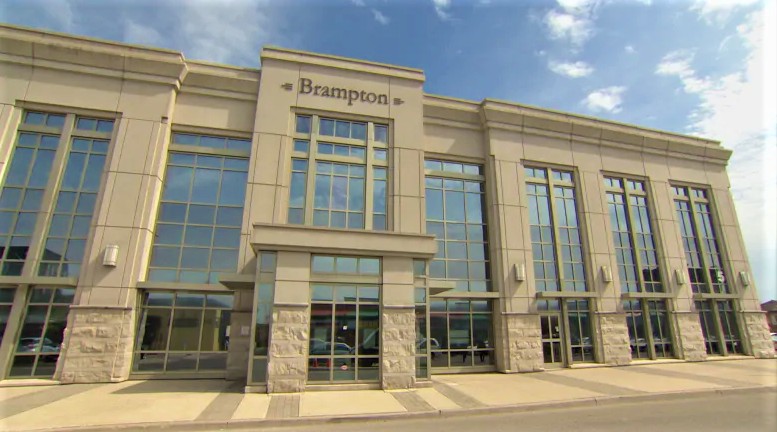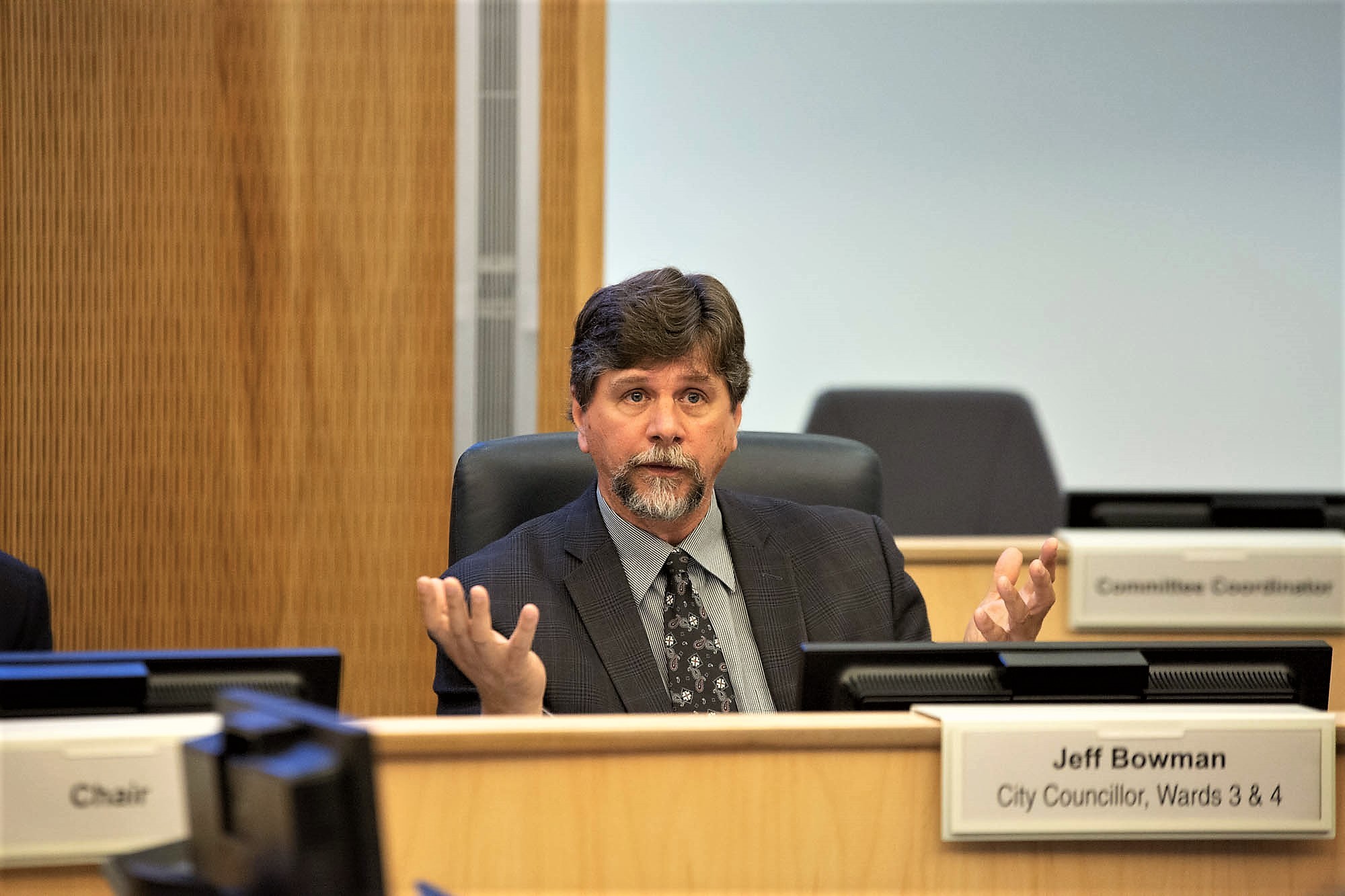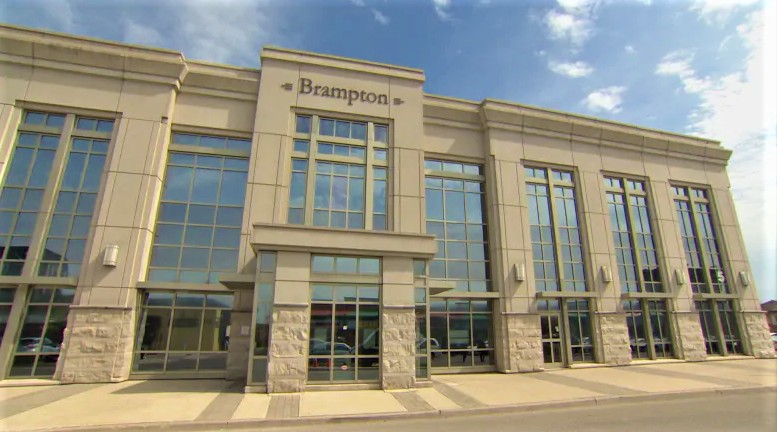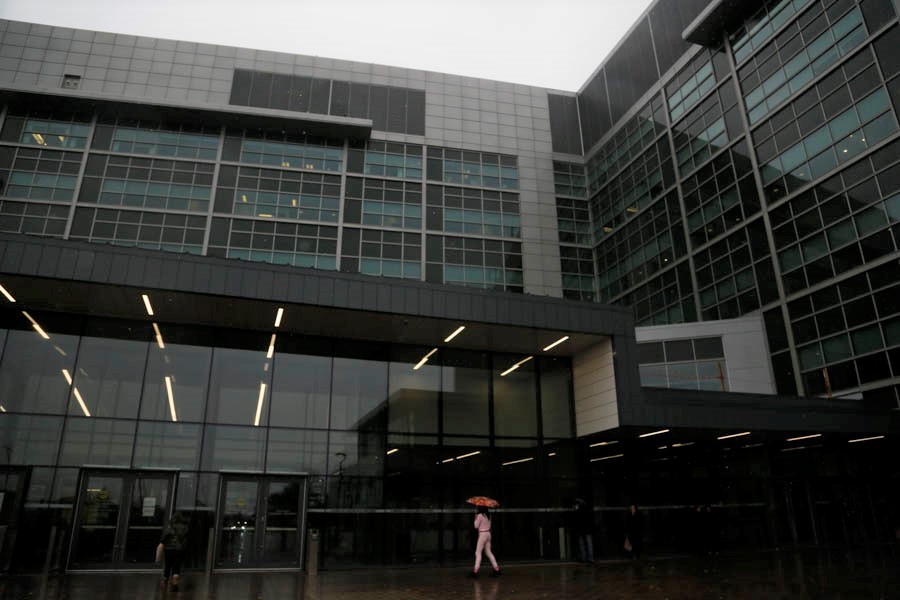
Add court services to the growing list of provincial responsibilities in Brampton that are not keeping up with growth
Brampton’s courthouses have been overcrowded and under-resourced for years, and things are now nearing a tipping point. It’s the latest issue on a growing list of provincial duties in the high-growth city that Queen’s Park seems ill-equipped or unwilling to deal with.
The number of times courtrooms handling provincial offences needed to close this year because there was no judge available to preside has increased one-third over last year, and recent projections from the city show Brampton is on the edge of having cases thrown out due to unreasonable delay.
“We’re approaching a critical shortage here,” said Councillor Jeff Bowman. “We’ve got to go that extra mile to do whatever we can…I hate to see cases thrown out.”

Brampton Councillor Jeff Bowman
For Brampton’s provincial offences court a lack of available Justices of the Peace has led to 34 percent more courtroom closures this year compared to 2018, and with anticipated retirements for Justices in 2020, that number is projected to increase to 169 percent next year unless more resources are allocated to the city’s courthouse.
Allowing cases to be thrown out sends a bad message to offenders, who might view the city as a safe place to violate provincial and municipal laws.
Currently, the City of Brampton has an agreement with the province, put in place in 1999, tasking the city with operating the Provincial Offences Court (5 Ray Lawson Boulevard). Under that agreement the city oversees the entire operations of the court, including administration and prosecution of non-criminal offences, including charges under the Highway Traffic Act and municipal bylaw infractions.
Under the same agreement, the Minister of the Attorney General (MAG) is responsible for allocating the Justices of the Peace to preside over the provincial offence matters. However, in recent years, the province has slacked on its end of the agreement.
“The Central West Region is experiencing a significant shortage in the judicial resources allocated and available to service the area,” the Brampton staff report reads. “This is having and is anticipated to have an increasingly negative impact on the justice system in the Central West Region, including negative effects on fair and timely processing of charges and on public confidence in the justice system.”
To make matters worse, the Central West Region — which includes Peel, Halton, Niagara, Haldimand County, and Norfolk County — is operating 30 percent below its capacity for Justices. Currently the province has 52 Justices of the Peace allocated to the region, but there are only 40 available to actually sit in court right now.
This has led to a cascading effect of courtroom closures, with a number that has increased since 2017. That year, the Brampton POA court had 125 closures, and that number has increased to 177 so far in 2019. It’s expected to balloon to 355 in 2020.

Brampton's provincial offence courthouse
The delays experienced at the Brampton courthouse have been ongoing for some time. However, following a 2016 Supreme Court decision, these wait times and cancellations are given new significance as there are now finite timelines placed on matters before the court.
This means that matters before the provincial court must be dealt with in 18 months and 30 months for the Superior Court. If these timelines aren’t followed, it can lead to cases being thrown out by the courts due to unreasonable delay.
These new deadlines are already straining police, provincial and municipal resources, while ongoing delays in other areas of the court process are already putting further pressure on the system.
According to the MAG, the “standard is to provide counter service to court clients in 30 minutes or less.” But as The Pointer previously reported, in early summer, average wait times to file family matters at Brampton’s Superior Court of Justice reached two hours and 20 minutes, nearly five times the ministry’s standard. Recent figures show that the average wait is now down to 1 hour and 12 minutes — similar to the same quarter the year before, but still far longer than most GTA courts.

Brampton's Superior Court is also experiencing delays
According to City of Brampton staff, the number of looming courtroom closures represents a “critical point” and is a result of many of those Justices who serve this area being set to retire. Justices are only replaced once one retires, and the hiring process can take between 12 and 16 months before they are actually robed-up and sitting on a bench.
Additionally, Brampton staff see the problem only getting worse as the city’s population continues to grow — jumping 13 percent between 2011 and 2016. It’s anticipated this continued growth will result in a corresponding increase in the amount of charges processed through the Brampton courthouse.
For that reason, the city is calling on the provincial government to review both the funding allocated to the Central West Region, as well as the number of Justices.
To date, the city has already made efforts to do more with less.
Efforts have been made to modify the court schedules to allow a more efficient use of the resources available, such as increasing the number of court matters in one block while increasing the number of municipal staff to administer them, but there has been little relief from the growing pressure.
“It will have a significant impact simply because our team has already tried to juggle and manage the schedules,” says Joe Pittari, the city’s commissioner of corporate services. “Given the increase in the number of charges being laid and the scope of work, there is going to be a greater impact.”
“There is only so much the system can handle,” he adds.
The city is now writing to the province in the hope it will initiate an early hiring process for Justices in order to avoid the significant gap that is expected early next year. Additionally, the city wants the province to review its allocation of Justices, arguing they are in dire need of more than the current allotment.
For Mayor Patrick Brown, the issue is a frustrating one, particularly because he wrote to the province last year with the same concerns laid out in the recent staff report.
“We’ve had criminal trials thrown out because of that two-year precedent,” Brown says, arguing that the main reason the province has not appointed more Justices is simple cost savings. However, Brown says it will cost the government more in the long run if they continue to allow these delays to go on, both in terms of administrative costs, and lost revenue.
“I’m sure if you look at the collection of some of these fines and the wasted time we could probably put a dollar figure on that and that might be more compelling to this government,” Brown said.
The short shrift for the city on its court funding from Queen’s Park is also particularly frustrating in light of other crucial areas of provincial responsibility in the city that are woefully managed by the Ontario government.
The city’s infamous hallway healthcare crisis is a result of receiving less than half the per capita funding for hospital beds compared to the Ontario average.
And the city’s schools have operated at far beyond capacity for more than a decade, with the province failing to fund the costs of growth that it has mandated.
Critics have for years exhorted Queen’s Park to update its outdated population-based funding formulas which are either using old figures or do not accurately capture the rate of growth in communities such as Brampton where the population continues to explode.
The pressures are inter-connected, for example, the rapid growth without proper funding for affordable housing leads to the proliferation of illegal basement apartments, which adds extra students to schools that can’t properly plan for expected enrolment numbers. Meanwhile, the city’s efforts to crack down on the illegal units are wasted if offenders are caught but have their cases thrown out in the provincial offences court because of the lack of funding to meet timelines.
Some critics have questioned why Brampton seems to continually be neglected, while the province struggles to reduce its massive debt and residents here beg for their fair share of funding.
Add the courts to the growing list of provincial services that make Brampton residents wonder why they even bother paying taxes.
Email: [email protected]
Twitter: @JoeljWittnebel
Submit a correction about this story


